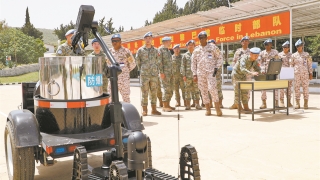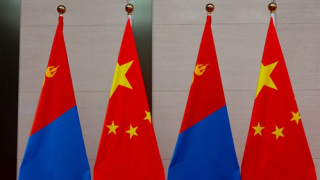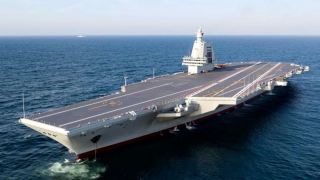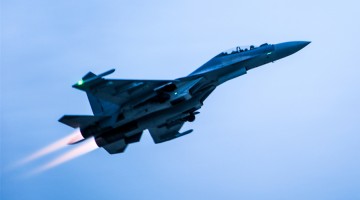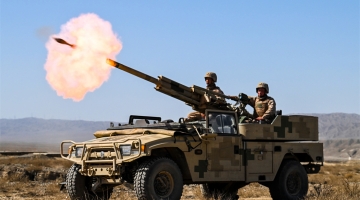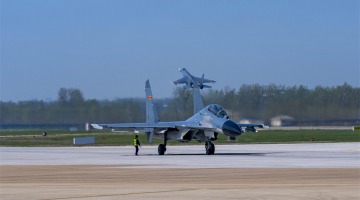Xie Ruiqiang
The situation on the Korean Peninsula has heated up again recently. The US Carrier Strike Group had a joint military exercise with ROK Navy and the Japanese Maritime Self-defence Force (JMSDF) again in waters around the Korean Peninsula five years after the previous one. In response, DPRK held a massive training-exercise too that involved the mobilization of tactical nuclear troops, artillery, and air force.
The ROK Foreign Ministry revealed on October 13 that ROK and the US are discussing specific cooperative plans for strengthening and extending their deterrence, including deploying America’s strategic weapons in ROK at a proper time based on consultation. Because of this, ROK’s internal debate on whether to redeploy tactical nuclear weapons or have nuclear sharing with the US has aroused global attention.
Asian Journal reported that some in ROK believed deploying nuclear weapons is the basic policy in response to the nuclear threats from DPRK, and some suggested a nuclear sharing plan that involved sending ROK’s air force fighters like F-35 and F-15K that can throw B61-12 nuclear bombs to Guam and Hawaii for simulated N-bomb-dropping training. Chosun Ilbo published an article saying that the ROK side has already proposed to the US side to enhance and extend deterrence, share tactical nuclear weapons, and discuss the circular deployment of nuclear aircraft carrier strike groups and nuclear-powered submarines.
Speaking of the redeployment of tactical nuclear weapons on the Korean Peninsula, ROK President Yoon Suk-yeol said they are carefully listening to and studying the various voices in ROK and the US. ROK Vice Defense Minister Shin Beom-chul also made a statement on this topic on October 13. He believed that compared with redeploying tactical nuclear weapons, it is more important for the US to transfer its strategic weapons to ROK to pressure DPRK and bring it back to the table for dialogue.
According to ROK media, the US may redeploy tactical nuclear weapons in ROK in two ways: one is like NATO’s nuclear sharing, and the other is the US deploying the weapons for its troops in ROK to operate.
With NATO’s nuclear sharing mode, the US deploys tactical nuclear weapons in NATO members including Belgium, Germany, Italy, the Netherlands, and Turkey, which are also armed with fighter jets that can serve in nuclear and conventional operations alike, while the US military personnel are responsible for overseeing the nuclear bombs. When things have worsened so much that the use of nuclear weapons is unavoidable, they can be used after NATO’s Nuclear Planning Group (NPG) reaches a consensus and with the approval of the US President and British Prime Minister.
“The ROK has commissioned a large number of America-made fighters, including F-15K, F-16, and F-35A, all of which are able to drop B-61 nuclear bombs in the American air force system. Therefore, the technical platform won’t be an issue and can be readily put to use with some minor modification,” said military expert Han Dong.
It’s worth noting that the nuclear sharing scheme proposed by ROK is different from the NATO model. According to Asian Journal, the Yoon Suk-yeol administration intends to achieve what NATO’s nuclear sharing model does without redeploying tactical nuclear weapons on its soil.
That’s because a redeployment of tactical nuclear weapons in ROK will generate severe and long-term security impacts, said Zhao Tong, a senior fellow at Carnegie-Tsinghua Center for Global Policy. That may not only trigger an arms race of such weapons in Northeast Asia but also send international efforts against nuclear proliferation down the drain.
“Redeploying tactical nuclear weapons in ROK or nuclear sharing is a matter of immense significance, for which a consensus must be reached across ROK, within the US, and also between the two countries,” said Zhao Tong. “It also relates to the allies’ attitude, nuclear security, splitting of expenses, and the formulation of relevant policies over the use of the weapons…there are just too many things to address.”
“Besides, redeploying tactical nuclear weapons or nuclear sharing is sure to cause a strong reaction in the surrounding countries, especially big ones. Will that provoke the DPRK to come up with more aggressive nuclear policies? How will the surrounding major countries react militarily? The US should think twice before doing anything and carefully evaluate whether that would be a worthwhile move,” said Zhao Tong.
American experts are not very enthusiastic about the ROK government’s “nuclear sharing” concept. Former ROK analyst Sue Mi Terry at CIA didn’t think Washington will support Seoul’s vision of the redeployment because the current platforms are adequately deterrent against the DPRK.
Bruce W. Bennett, a senior researcher at the RAND Corporation, pointed out that it would be better to deploy nuclear weapons somewhere out of reach for DPRK. If deployed in ROK, they will be a striking target for it. He also recalled how the deployment of THAAD years ago had caused heated arguments within ROK, almost divided the society, and incurred objections from neighbouring countries.
Editor's note: Originally published on thepaper.cn, this article is translated from Chinese into English and edited by the China Military Online. The information and opinions in this article do not necessarily reflect the views of eng.chinamil.com.cn.

